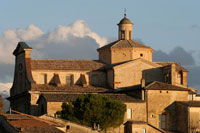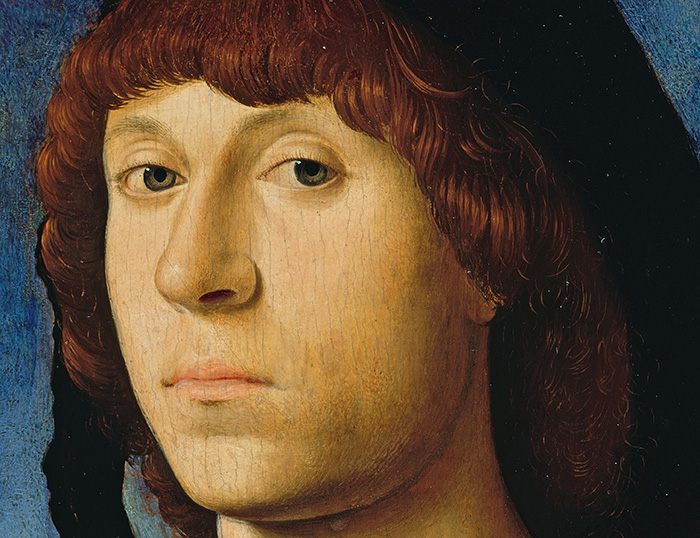 |
|
| E N G I T |
|
| “It is not merely the likeness which is precious ... but the association and the sense of nearness involved in the thing ... the fact of the very shadow of the person lying there fixed forever! It is the very sanctification of portraits I think—and it is not at all monstrous in me to say ... that I would rather have such a memorial of one I dearly loved, than the noblest Artist’s work ever produced.” Elizabeth Barrett Browning (1806–1861) |
|
Male portraits by Antonello da Messina (1430–1479) |
|
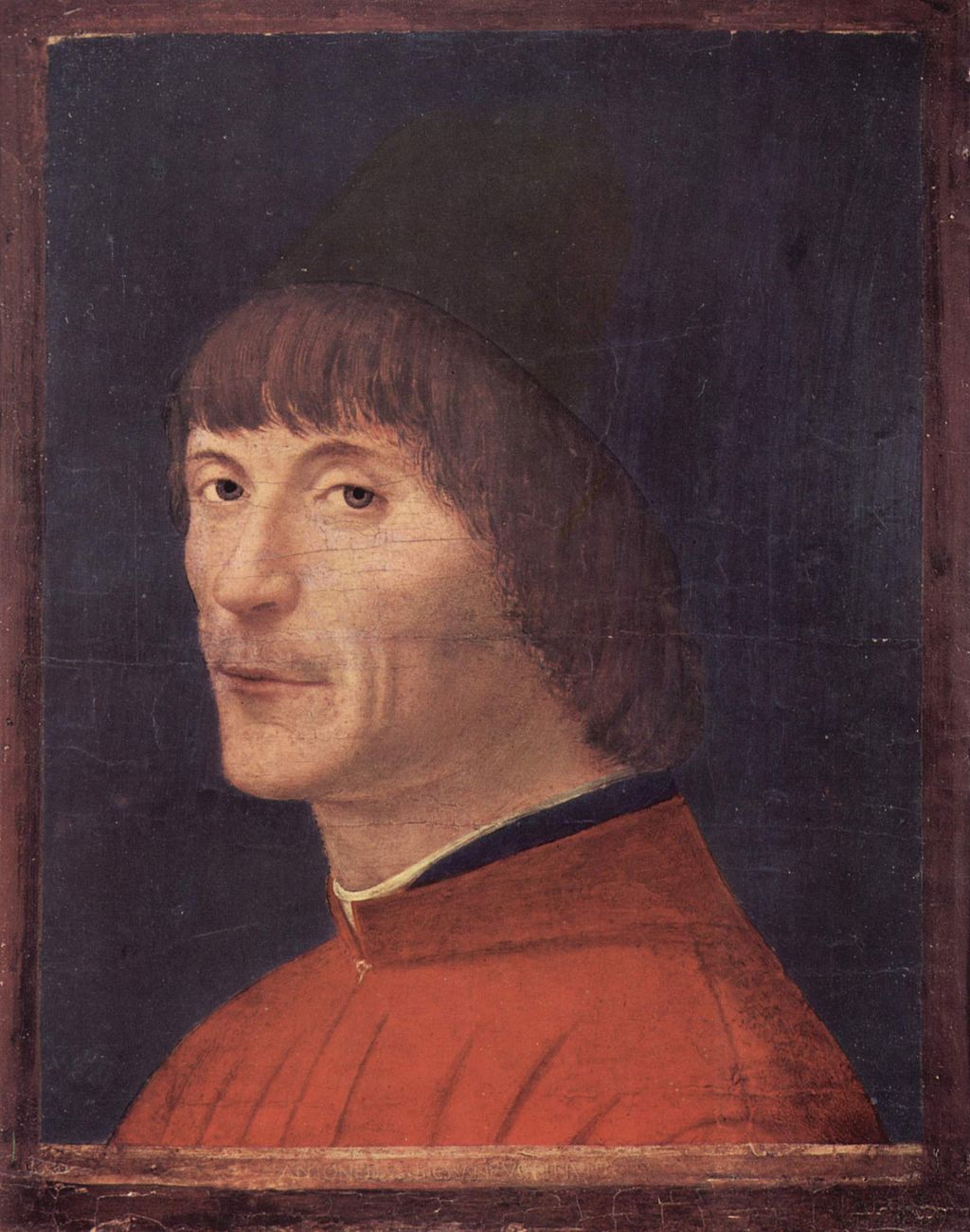 |
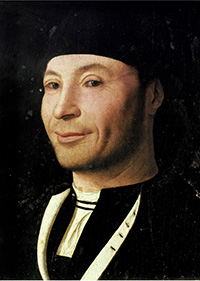 |
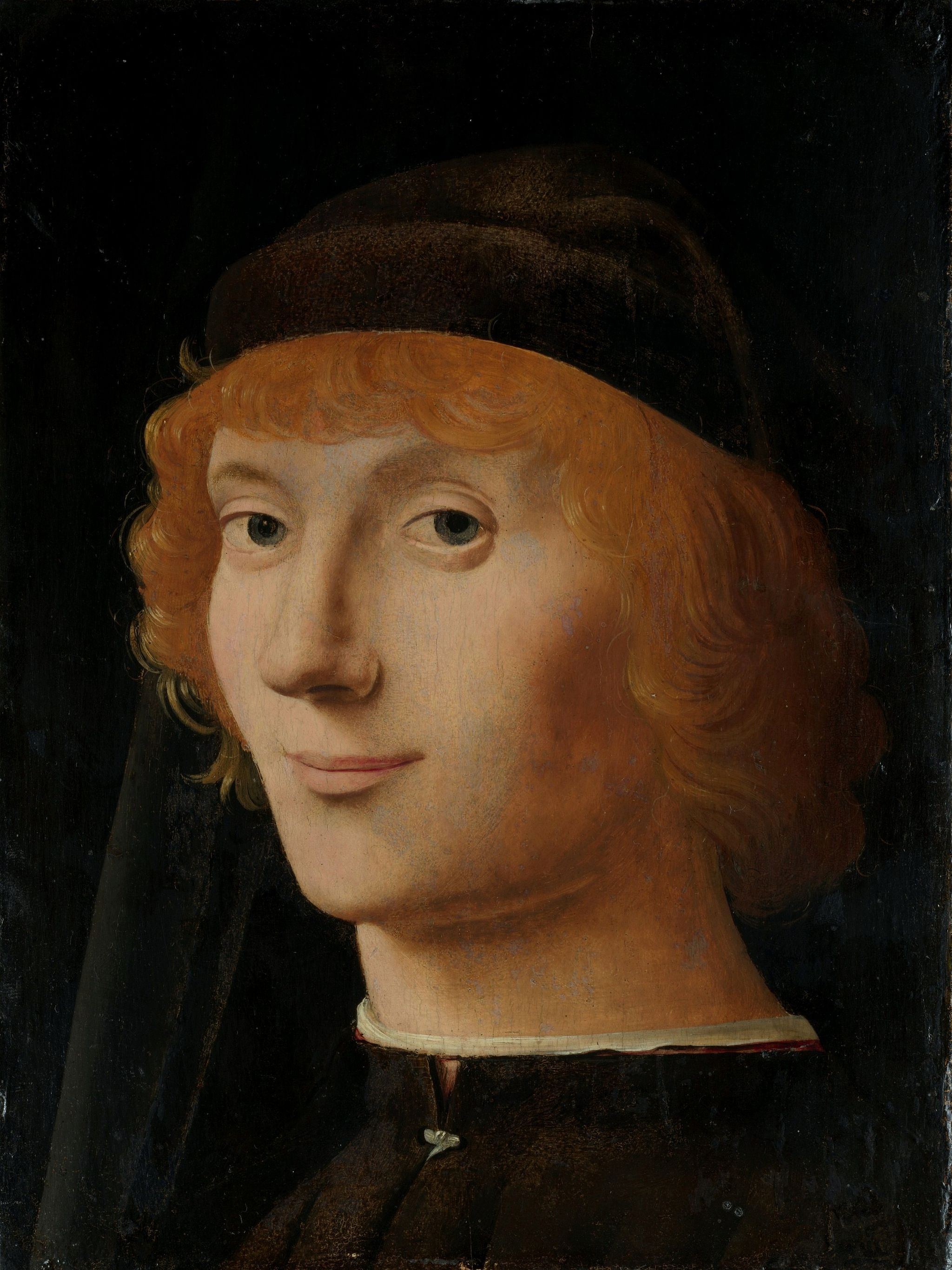 |
||
 |
 |
 |
||
 |
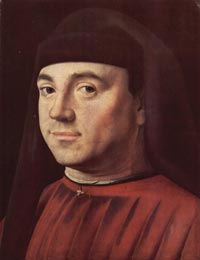 |
 |
||
 |
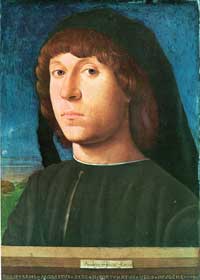 |
|||
Portrait of a Man is the conventional title of several male portraits finished by the Italian Renaissance artist Antonello da Messina in the course of his career. These include the famous portrait usually known as The condottiero, now in the Louvre of Paris.
|
||||
 |
This Portrait of a Man is housed in the Town Museum of Pavia Lombardy, northern Italy. The picture is signed according to the Flemish habit, by directly engraving the painter's name on the parapet in the lower foreground (instead of using a false glued panel), like the Madrid portrait. Despite the sign, the strict nearness to the Flemish portrait art and the poor state of preservation have pushed some scholars to doubt about the attribution to Antonello. The work has been dated to the 1460s basing on the fashion of the subject's dress and headgear. |
|||
|
||||
 |
This early portrait is one of Antonello s best- known works. Traditionally, it is believed to have come from the island of Lipari, where it appears to have been used as the door of a pharmacy cupboard. Baron Enrico Pirajno di Mandralisca acquired the por- trait from there, sometime in the nineteenth century, and, with the rest of his collection, it was later donated to the city of Cefalu. A caption in an early-twentieth- century catalogue of photographs identified the work as a portrait of ''an unknown sailor," and it retained that evocative title until Roberto Longhi noted (1953). perspicaciously, that ''Antonello did not paint por- traits of fishermen but of barons (^'baruni'y even if he also made use of common Sicilian facial features in his religious works/' Scholars have unanimously accepted the attribution of this panel to Antonello, since Di Marzo first pro- posed it in 1899. The portrait has been plausibly dated to the late 1460s, or perhaps between 1470 and 1472.[1] |
|||
Antonello da Messina (1430–1479), Portrait of an unknown man (late 1460's), oil on panel, Museo Mandralisca, Cefalu
|
||||
 |
This haunting portrait was painted in Sicily about 1470–72. Trained in Naples in the Netherlandish technique of oil painting, Antonello set the standard for portraiture when he came to Venice in 1475. Long before Leonardo da’ Vinci, he introduced the incipient smile as an indication of the inner life of the sitter, enveloping his features in a soft light and engaging the viewer with his direct gaze. In these ways, the picture responds to the often voiced view that painting was a mere depiction of the outward appearance of a person.[2]
|
|||
|
||||
 |
||||
|
||||
 |
||||
|
||||
 |
This Portrait of a Man is currently housed in the National Gallery of London, United Kingdom. It was printed on the Italian 5,000 lire note issued from 1979 to 1983. |
|||
|
||||
 |
||||
|
||||
 |
||||
|
||||
 |
This portrait, finished c. 1475, is housed in the Museo Thyssen-Bornemisza, in Madrid, Spain. |
|||
|
||||
 |
This Portrait of a Man by Antonello da Messina ishoused in the Turin City Museum of Ancient Art. Often called the Trivulzio portrait, this portrait was signed by Antonello and dated 1476. It was part of the collection of the Florentine noble family Rinuccini, which was later acquired by the Trivulzio. In 1935 the collection was scattered, although most of the material went to Milan. The Turin museum obtained this portrait and the Turin-Milan Hours. |
|||
|
||||
 |
This Portrait of a Man was signed by Antonello, and has been considered his very last work if the date on it is interpreted as 1478. It is therefore his last male portrait, and it housed in the Staatliche Museen (Gemäldegalerie) of Berlin, Germany. Relevant is the insertion by Antonello of a landscape in the background, as other artists (including Giovanni Bellini) used this innovative feature only starting from the 1490s. The picture shows influences from the late Flemish paintings, as can be seen from the rendering of the dress, similar to a Van Eyck portrait now at Sibiu. |
|||
|
||||
[1] This article is licensed under the GNU Free Documentation License. It uses material from the Wikipedia article "Male portraits by Antonello da Messina".
|
||||
|
||||
Montefalco |
Podere Santa Pia, giardino
|
Podere Santa Pia | ||
 |
||||
One of the best places to slow travel in southern Tuscany is Podere Santa Pia. This holiday house is a peaceful retreat, perfect for relaxing with magnificent panoramic views of the mystical Maremma hills up to the Mediterranean Sea and Montecristo.
|
||||
| Da Wikimedia Commons, l'archivio di file multimediali liberi | Categoria Antonello da Messina | ||||

